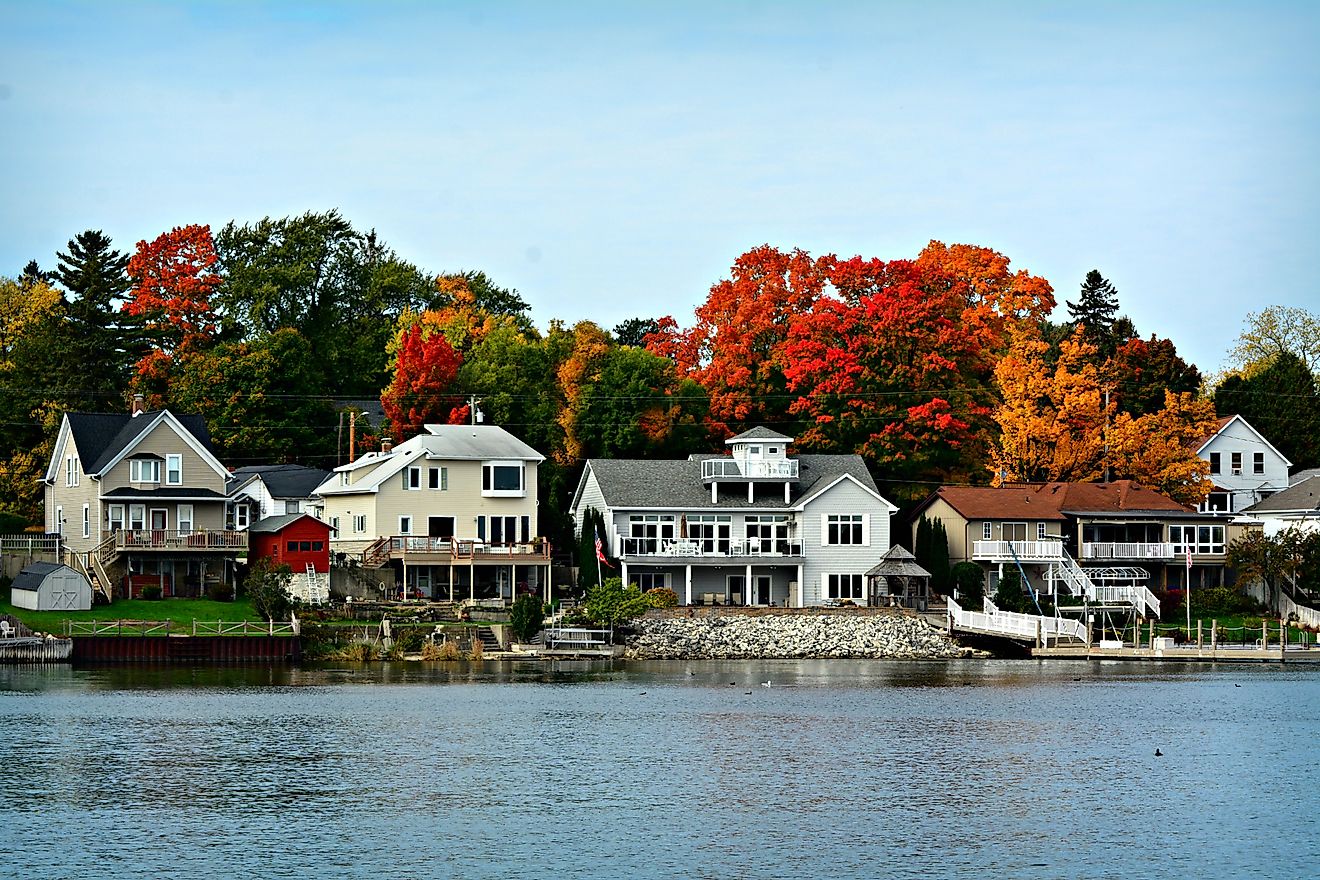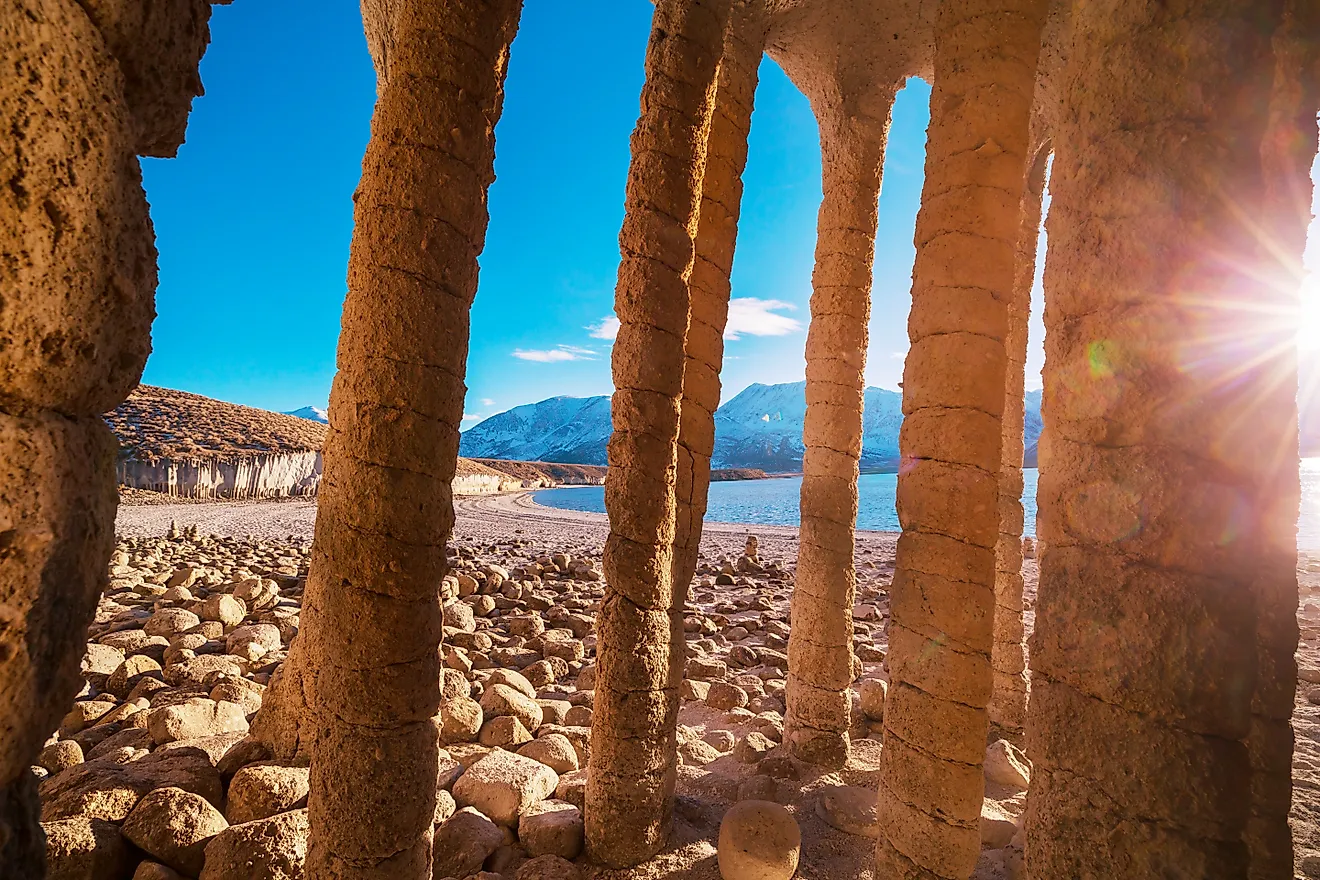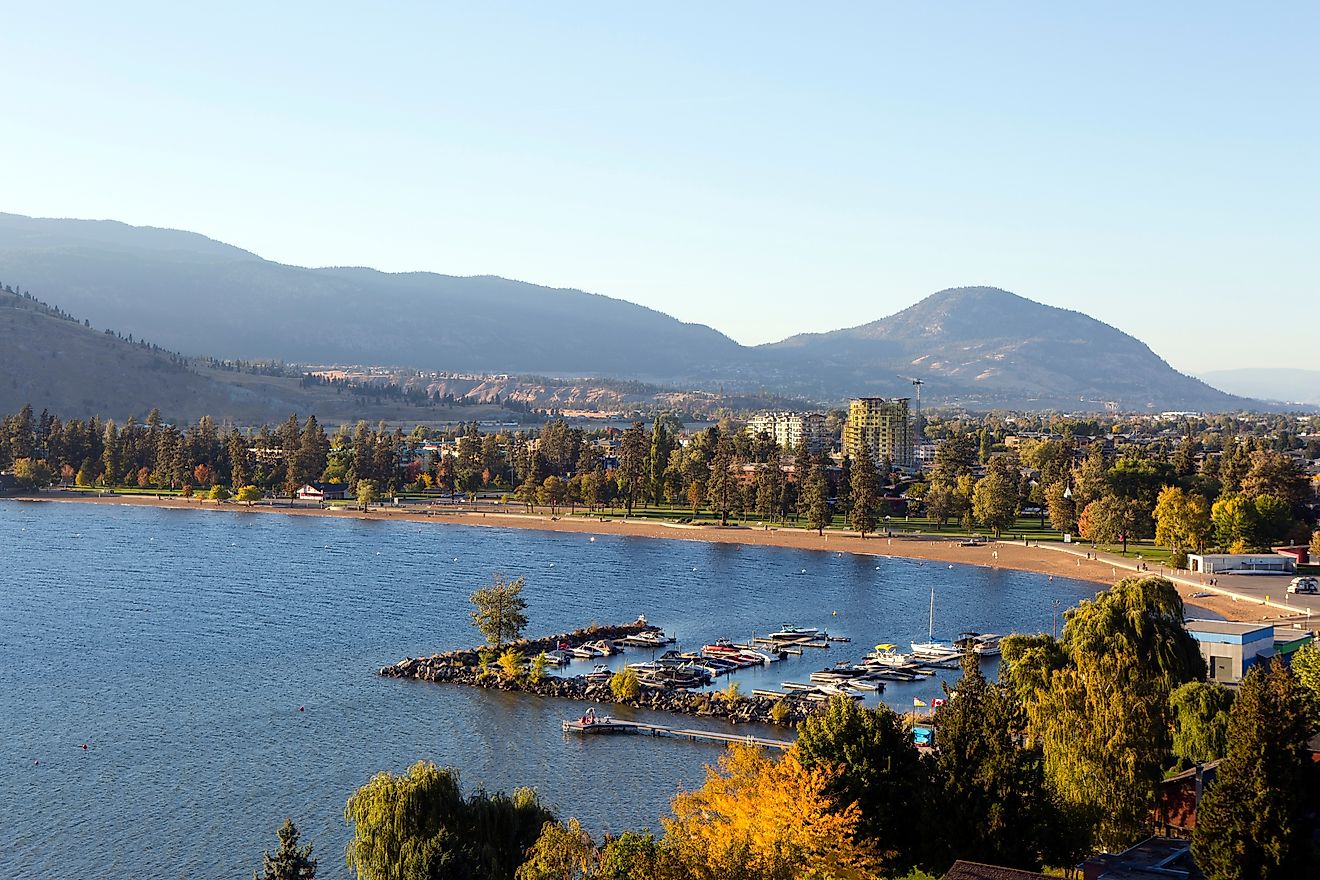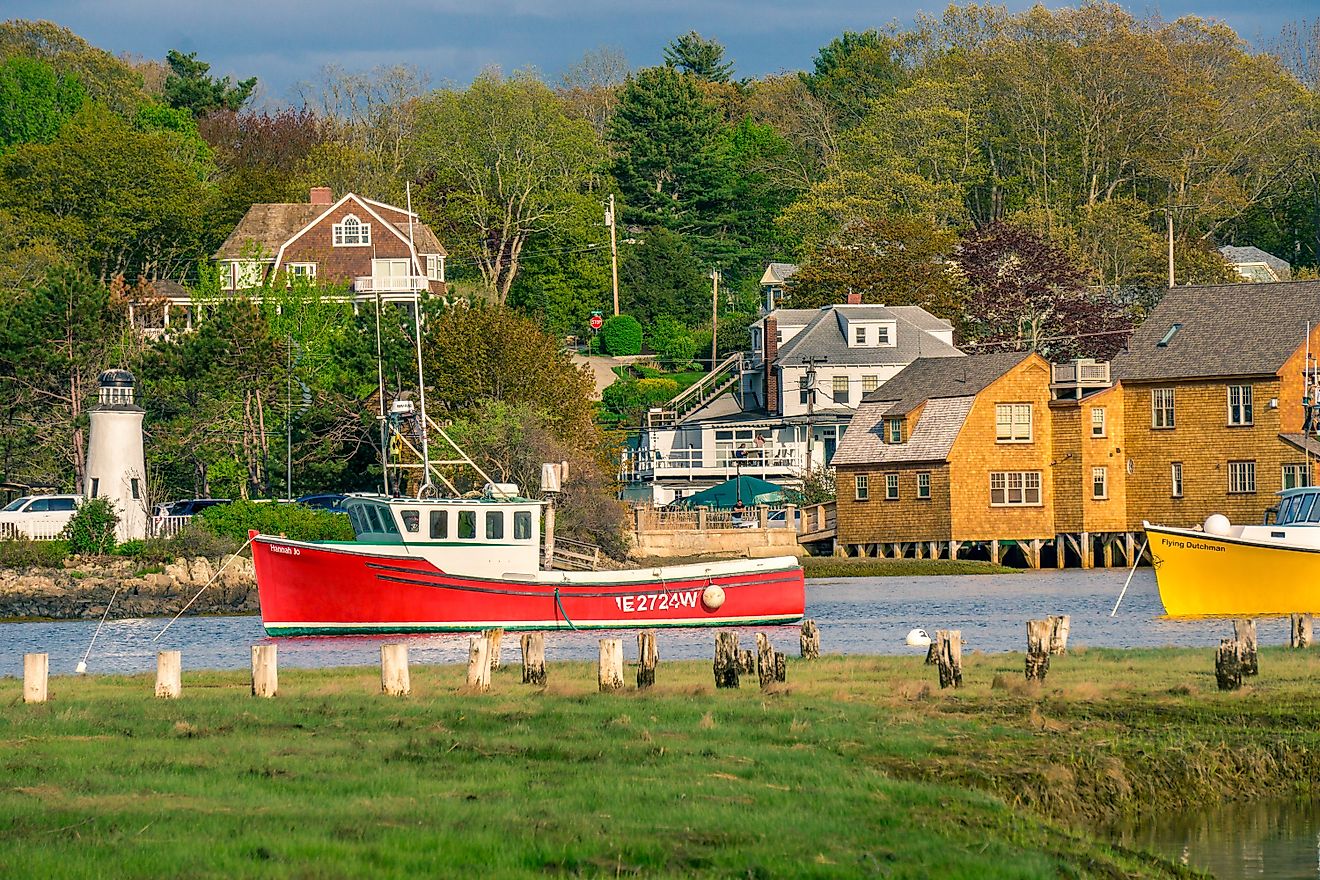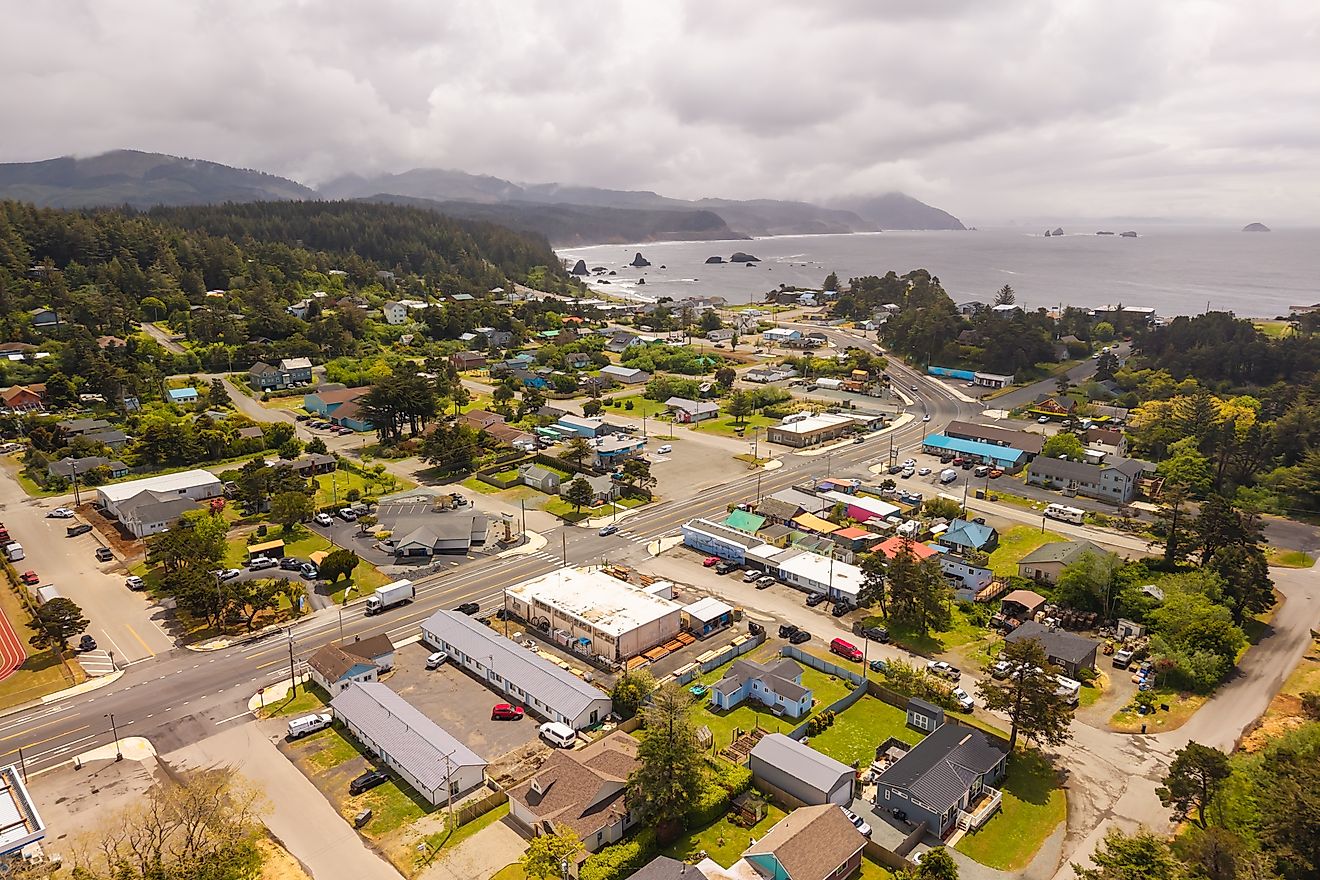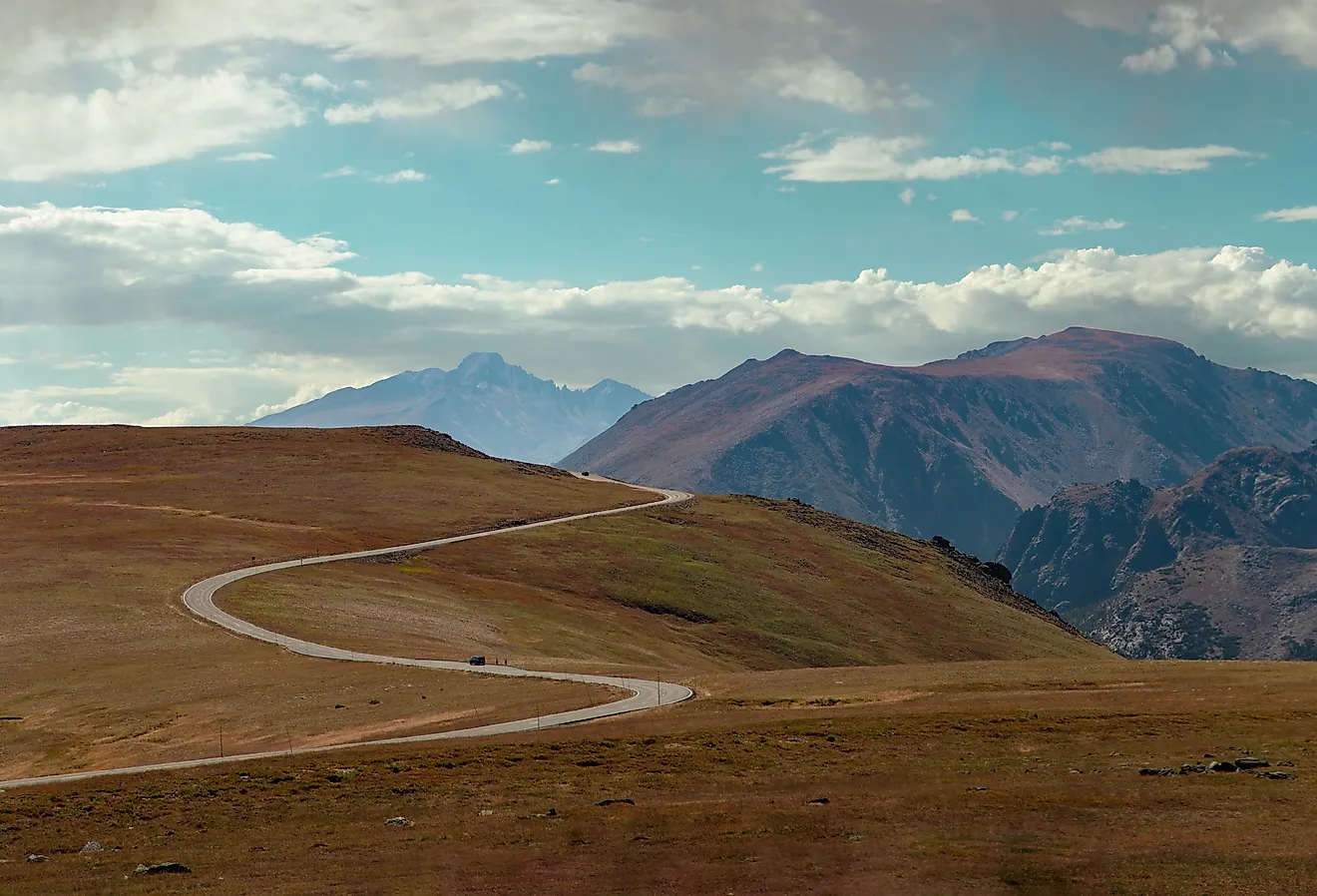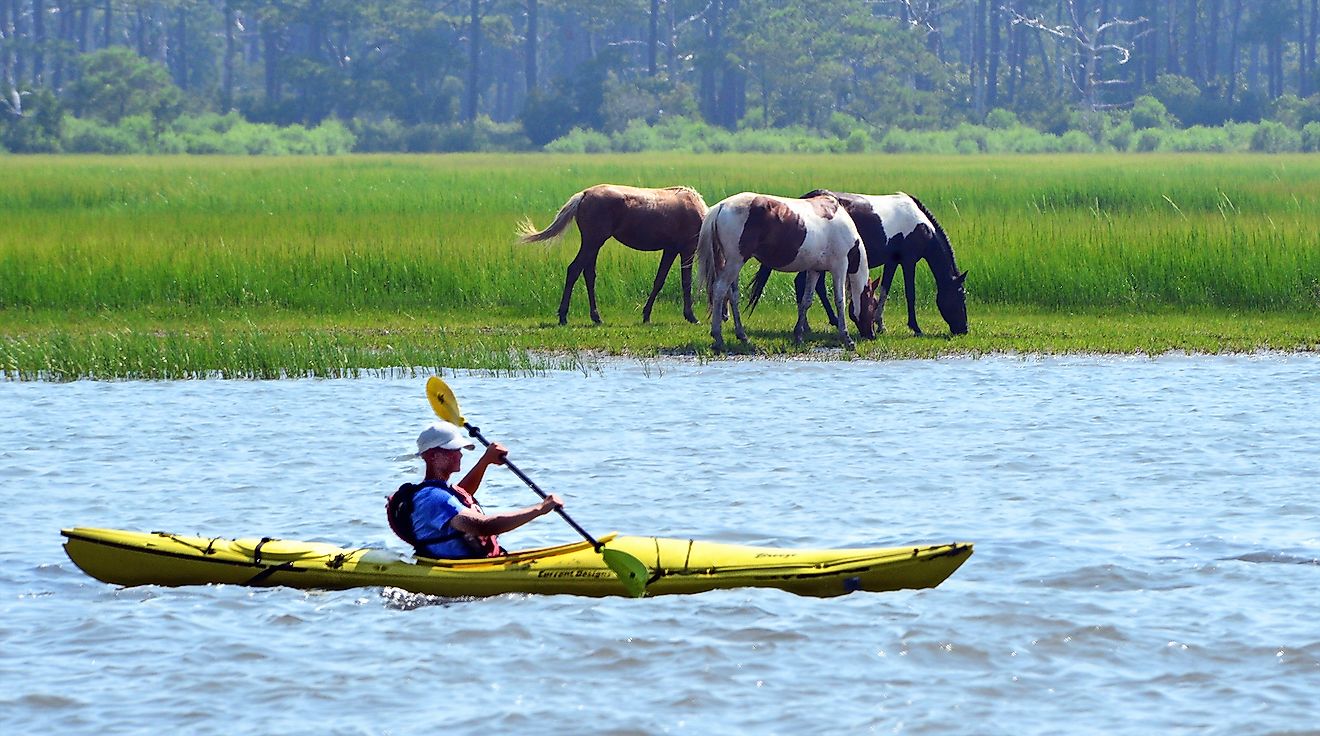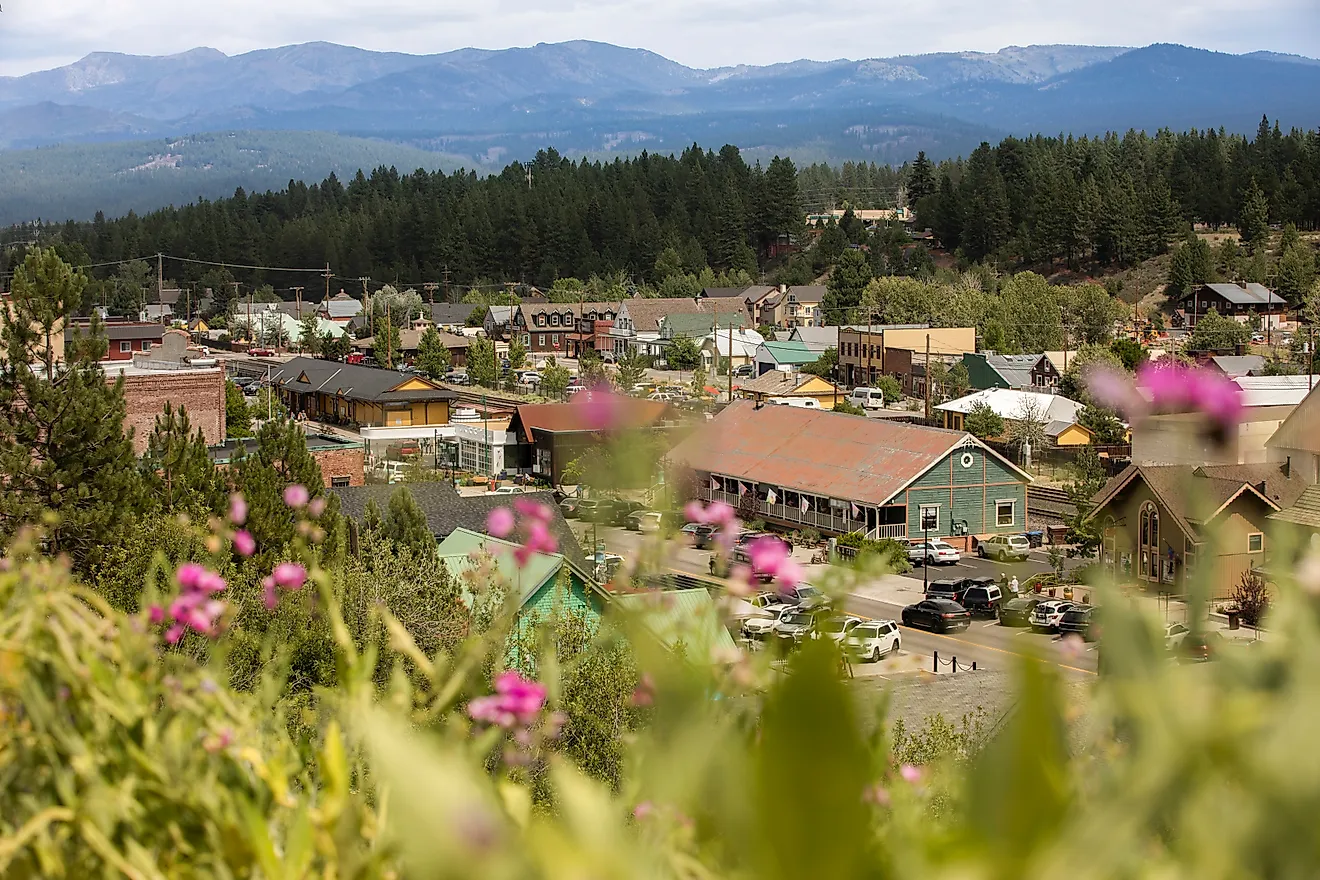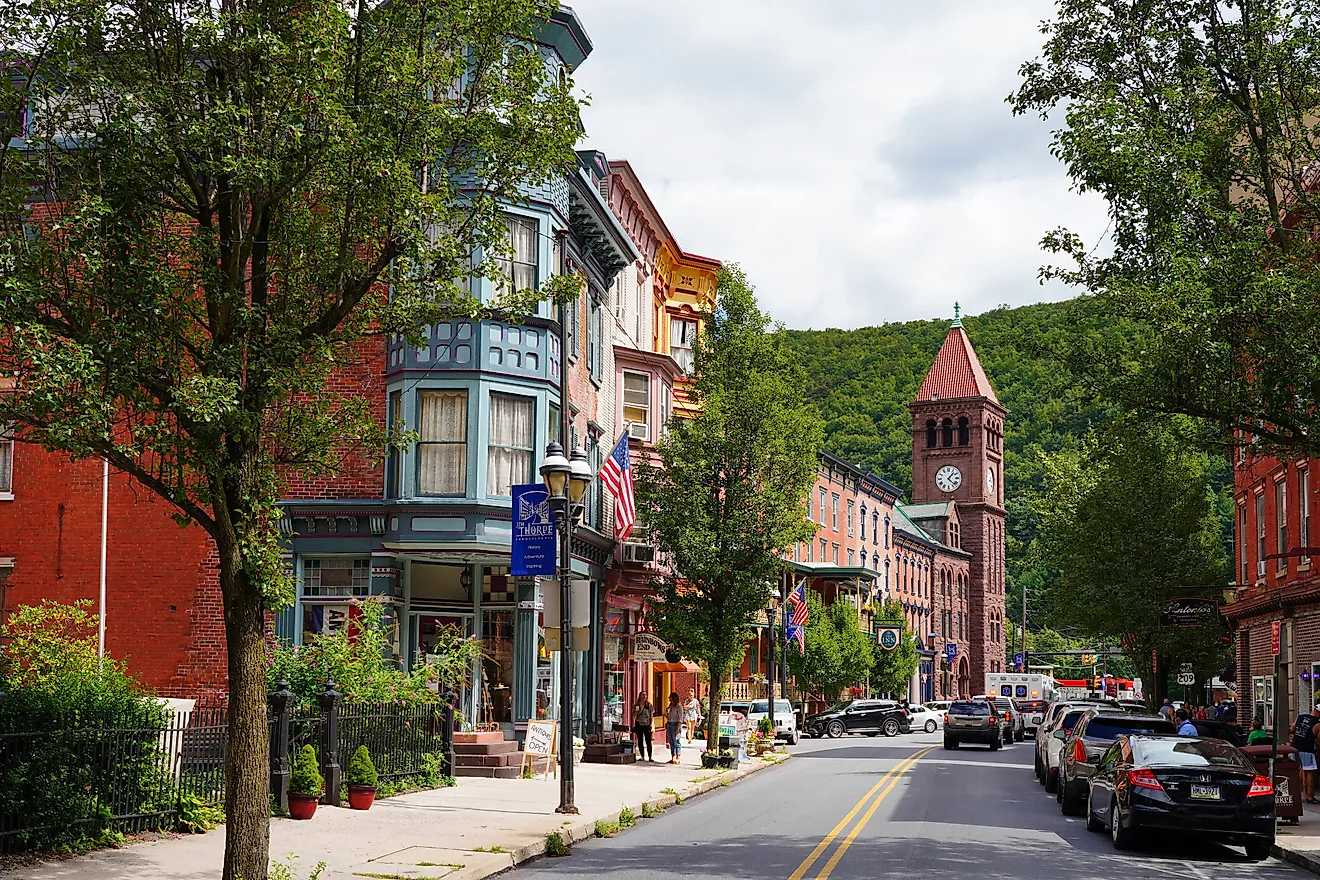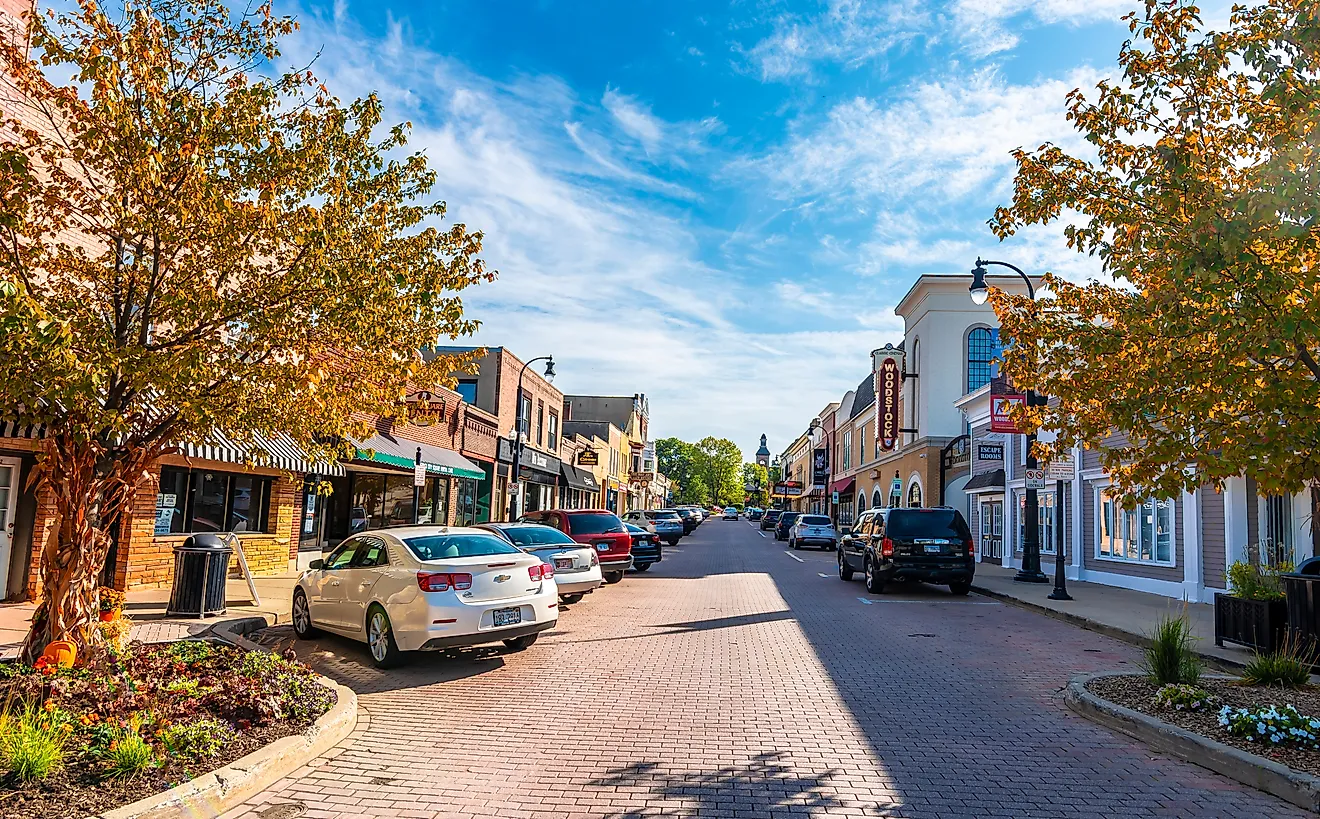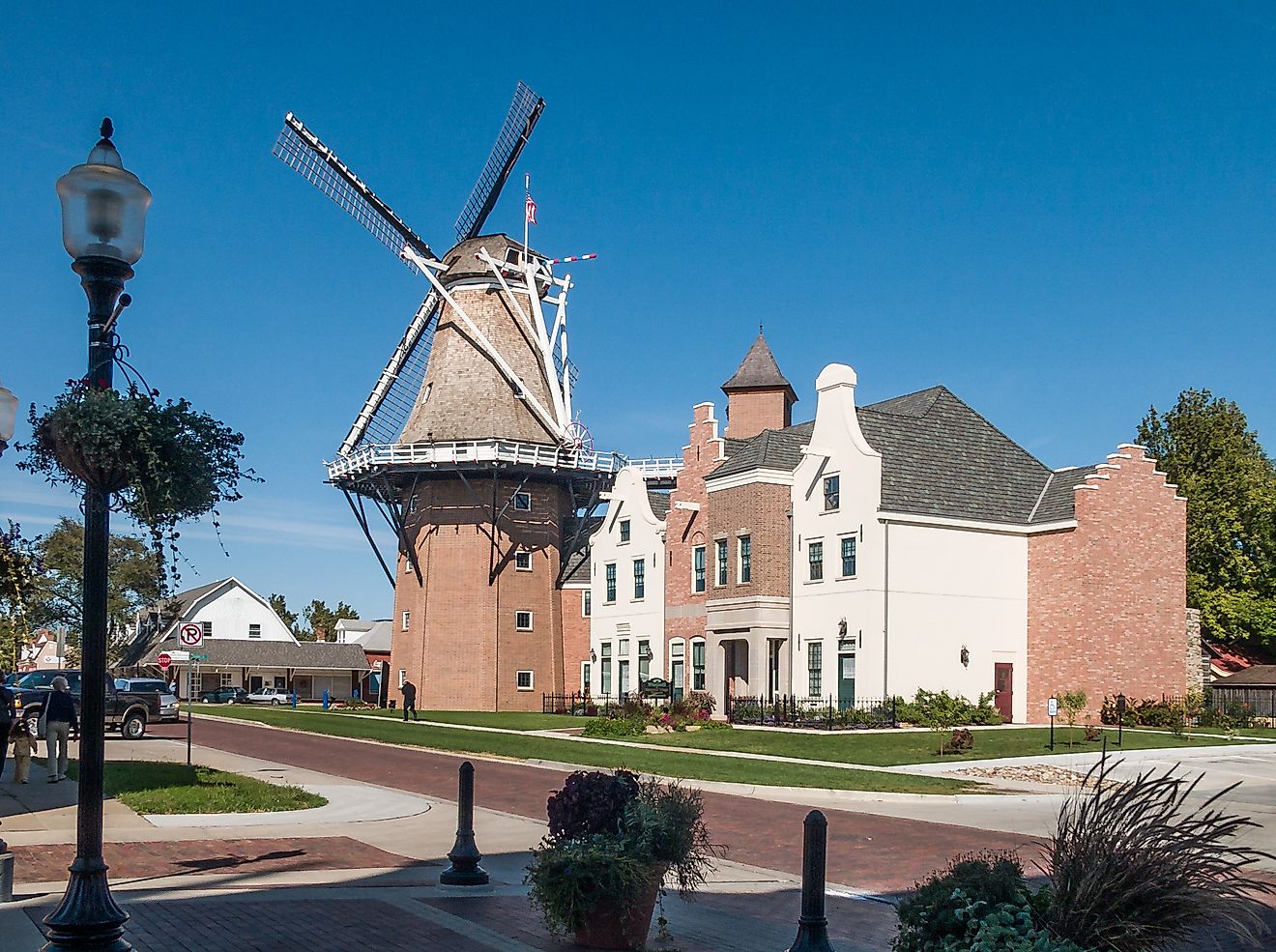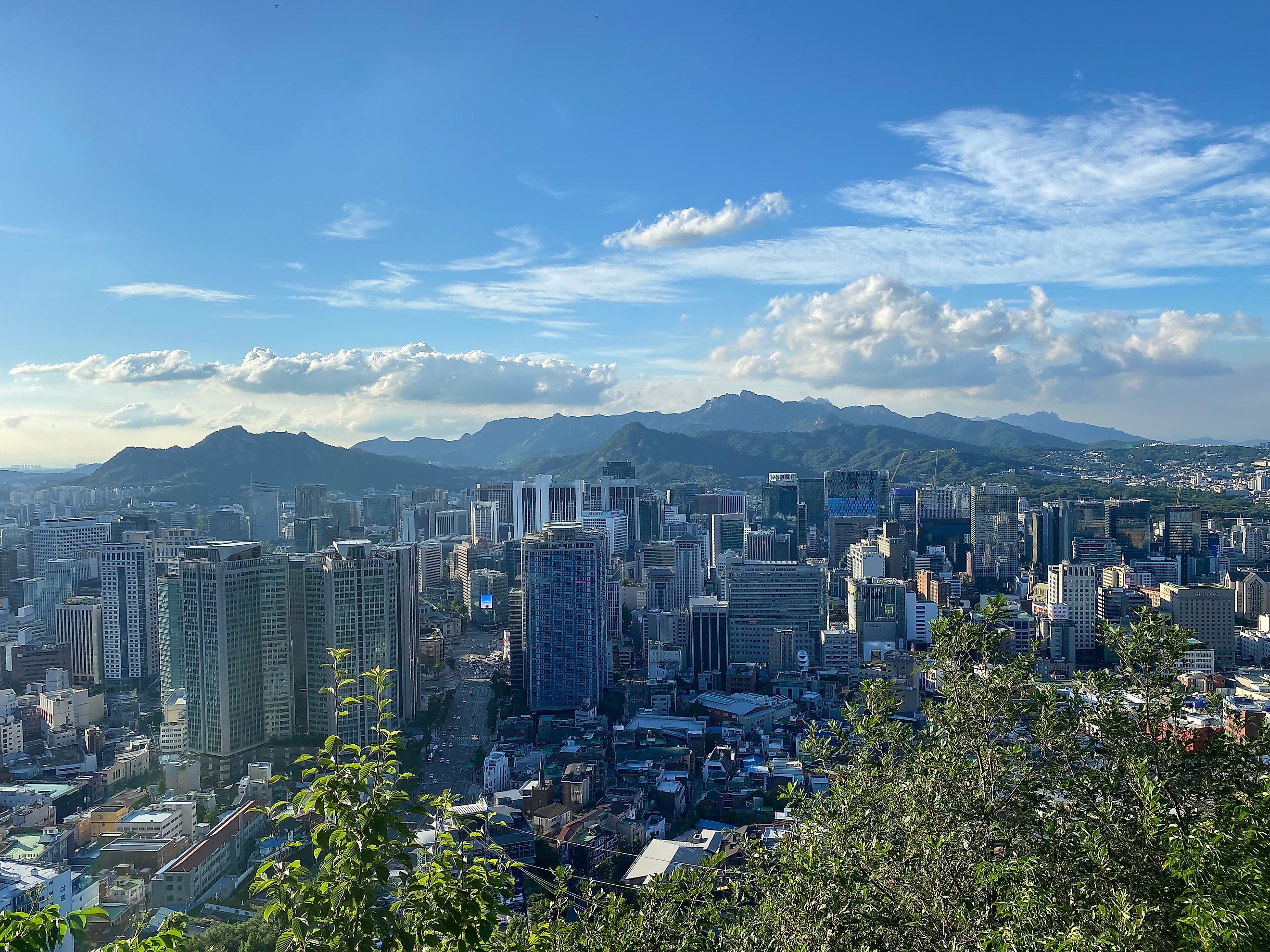
Sightseeing And Side Trips Around Seoul
South Korea's bustling capital has successfully congregated over half of the nation's population (for better or worse), and is equally magnetic for foreign tourists. Thanks to the Incheon International Airport, Seoul is well-connected to other global hubs, and thanks to the slick and speedy KTX train system, the rest of the peninsula (well, the southern part, anyway), is equally as accessible. As for the notorious North, Seoul-based operators run safe and informative tours of the Demilitarized Zone (DMZ), where patrons can learn about the (technically on-going) Korean War that keeps the modern, democratic, and capitalistic South at odds with the secluded, mysterious, and communist North.
Seoul's history, culture, and infrastructure are exceptionally dense, so it will be tough to scratch much more than the surface in a single venture. Nonetheless, here are a few key spots to aim for in order to get a sense of this multifaceted city.
Namsan And Seoul Tower
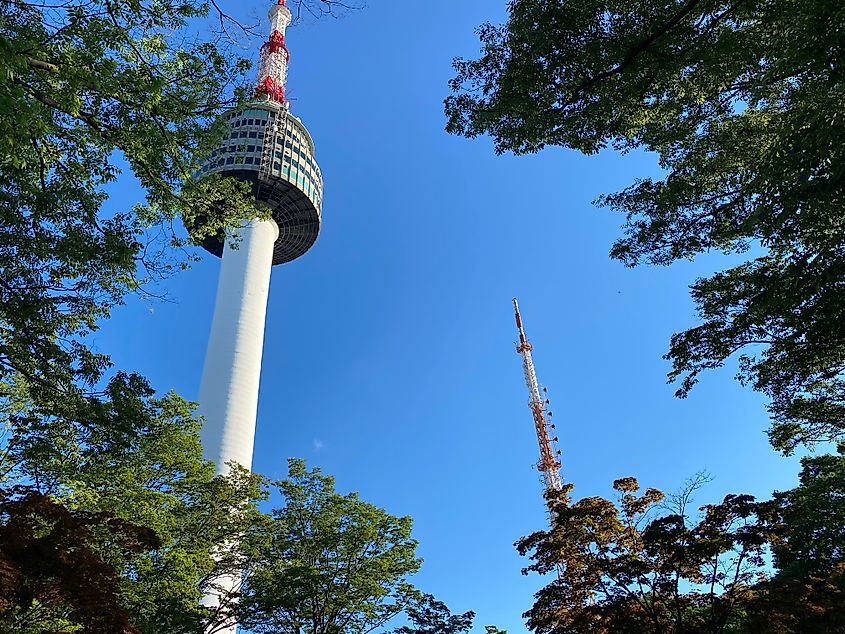
Mount Namsan is the focal point of Seoul's northern half (the Han River segments the city), and makes for an excellent introduction to the mountain-backdropped, skyscraper-scattered metropolitan area. Rising 270 meters above the Jung District, Namsan is a grunt to get up - but what better way to shake off jet lag than by breaking a sweat? If you are keen on the views but not the calf cramps, the Namsan Cable Car offers a scenic alternative, or you can take one of the regular buses to the parking lot right below the summit.
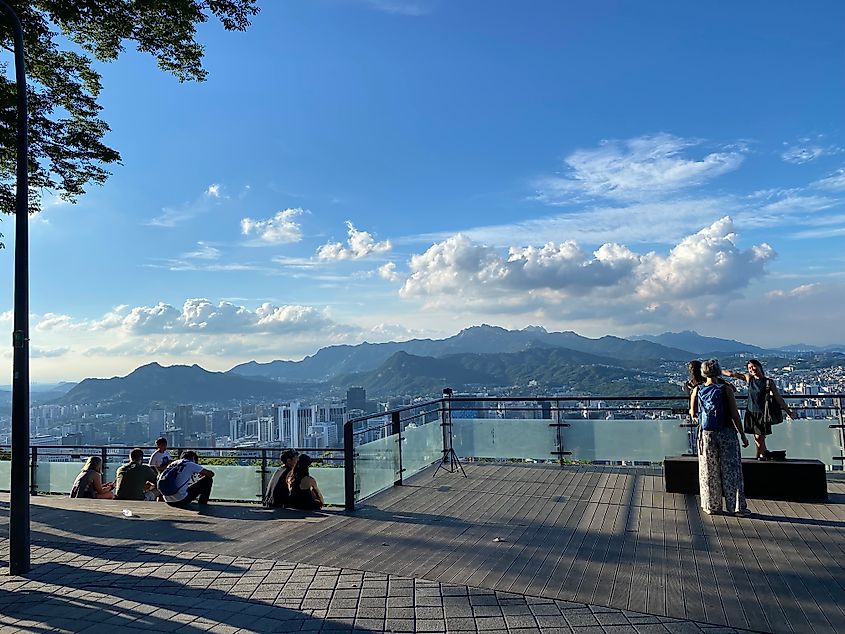
Along with panoramic views and hordes of enthusiastic locals, Namsan's peak is also the site of the North Seoul Tower (which pierces another 237 meters into the sky), a little amusement park, a colorful love-lock wall, a Japanese Shinto shrine, and other historical relics.
If you have the time and energy, it's well-worth exploring Namsan Park's peripheral trail system. The mix of stairs, paved paths, and wooded trails leads to remnants of the fortress wall, museums, various gardens, outdoor gyms, alternative viewpoints (some are even better than the summit), and more.
Bukchon Hanok Village
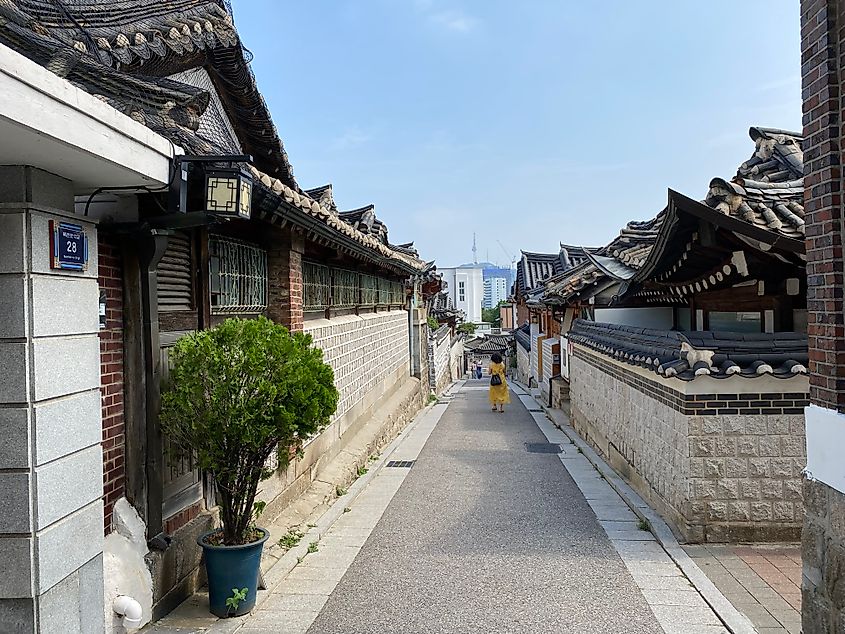
One of Seoul's biggest tourist draws is its modernized hanok village (hanok refers to the style of home common in Korea in the 14th-century) in the neighborhood of Bukchon. Originally home to high-ranking officials of the Joseon Dynasty, and now equal parts residential and commercial districts, the Bukchon Hanok Village exudes many textures throughout its intricate streets. Some sections are absolutely flooded with people desperately trying to pose for a profile picture in the gaps between groups, while other areas are entirely empty, allowing for a peaceful exploration of the ancient dwellings.
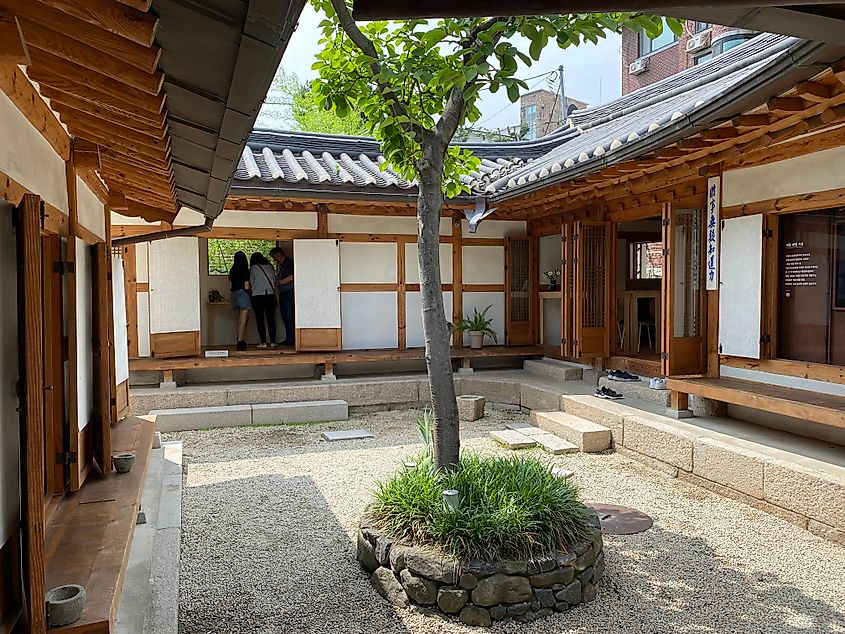
Many buildings along the main streets have been converted into cafes, retail shops, and museums, whereas the majority of side-street structures serve as the everyday homes for hundreds of locals (so tread lightly and be mindful of everyone's privacy). As it stands, the village is open to the public from 9 am to 5 pm, though prominent "Stop the Curfew" banners suggest that this is up for debate.
Insa-dong Culture Street
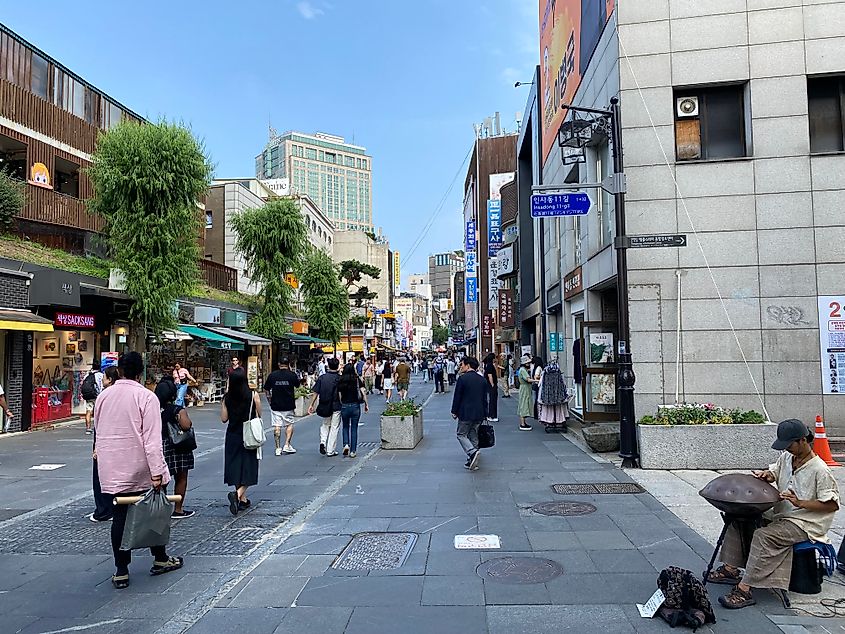
A short walk south from the Bukchon Hanok Village, the commercialized pedestrian strip known as Insa-dong Culture Street is sure to round out a memorable afternoon. Lined with elegant tea shops (pay attention to the ones above the street too), handicraft merchants, pottery shops, clothing stores (both modern and traditional), classic souvenirs, pop-up markets, restaurants galore, and even a few buskers ensure that Insa-dong plays on every sense. Far from a tourist trap, there are no pushy vendors in these parts. In fact, I was actively trying to buy an old-fashioned linen hat and had to work to get the shopkeeper's attention (a good problem to have, in my opinion). Patronizing the little art market and food stalls was similarly relaxed and rewarding. I ended up walking away with a handcrafted wooden owl that is said to bring wealth, and took the edge off my appetite with some delicious vegetarian gimbap (i.e. Korean sushi).
Mapo Bridge and Seoul’s Mental-Health Crisis
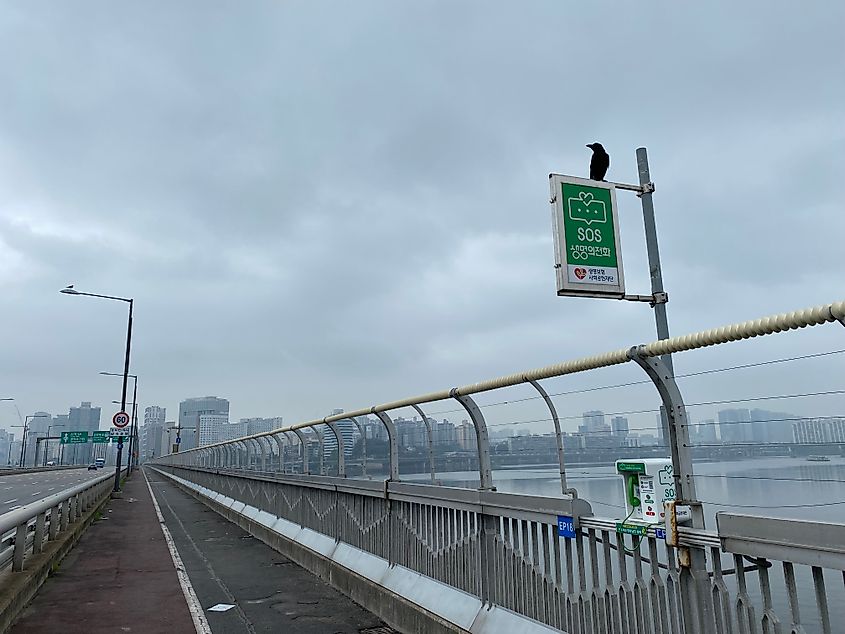
Although Seoul is full of energy and attractions, it also has places that prompt quiet reflection. Mapo Bridge, now often called the “Life Bridge”, is one such site. In the early 2000s and 2010s, many people, especially young adults facing intense academic and workplace pressure, came here during moments of crisis. In response, the city has installed higher safety railings, crisis-line call boxes, and AI-enabled sensors that alert rescue teams if someone appears to be in danger. Uplifting messages that once lined the span were later removed after studies showed they were less effective than hoped. Today, the bridge serves both as a busy crossing and a reminder of the importance of mental health support.
I actually had a conversation with a Korean woman (who shall obviously remain nameless) about this bridge while sitting in a bar in Gyeongju. Now an English teacher in the relaxed mountain town, she confessed that as a teenager living in Seoul, she went to this bridge at the height of her stress surrounding the CSAT exams (i.e., an all-day test that can determine the course of the rest of one's life). Thankfully, she made it through that trying period and took it as a sign to flee Seoul's rat race.
On a cloudy Saturday, I was jogging along the Han River and came upon Mapo Bridge. Intrigued, I mounted the stairs to its pedestrian walkway, only to find a crow sitting atop the call box, watching me intently and squawking. I couldn't help but read into the Poe-appropriate symbolism, especially given the ominous ambience.
Majang Lake Suspension Bridge
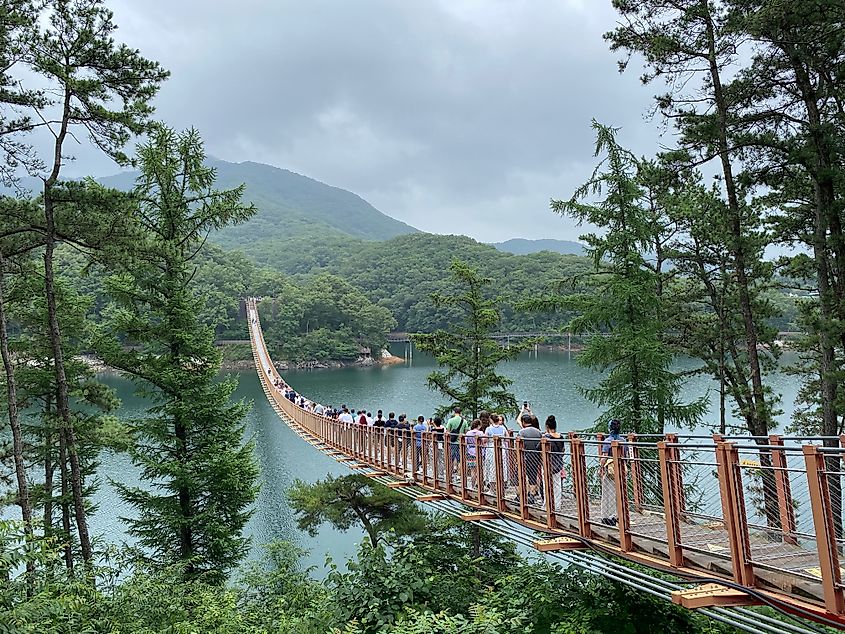
Ok, let's pivot from a tragic, city bridge to an inspiring, nature-based one. A brief sojourn outside of the city (usually connected to the DMZ tour, but can be visited independently just as easily), reveals the tree-lined Majang Lake (technically a reservoir). Crossed by the longest suspension bridges in Korea (220 meters) and bordered by a gentle walking trail, Majang was a welcome sanctuary after spending several days in the thick of Seoul. I suggest arriving right at 9 am to get the first crossing of the day. Crowds tend to increase as the day progresses, as most tour buses first go to the DMZ and then Majang Lake on the way back.
DMZ Tour
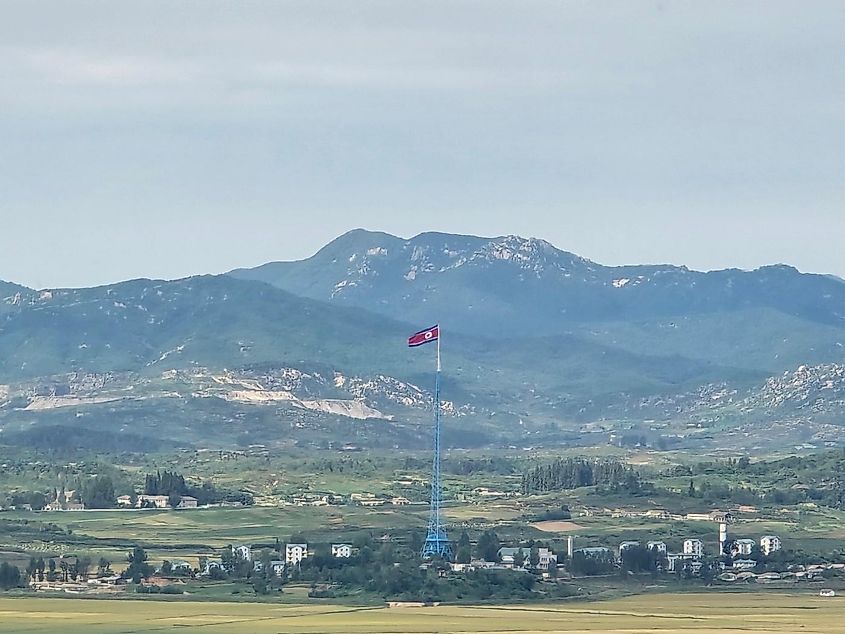
"Demilitarized Zone" is something of a double misnomer. Given that the Korean War has yet to formally conclude, and given the reputation of the neighbor to the north (formally, the Democratic People's Republic of Korea), the 38th parallel is heavily militarized and consists of a series of zones. Unfortunately, because of recent events, the Seoul-based DMZ tour has changed significantly.
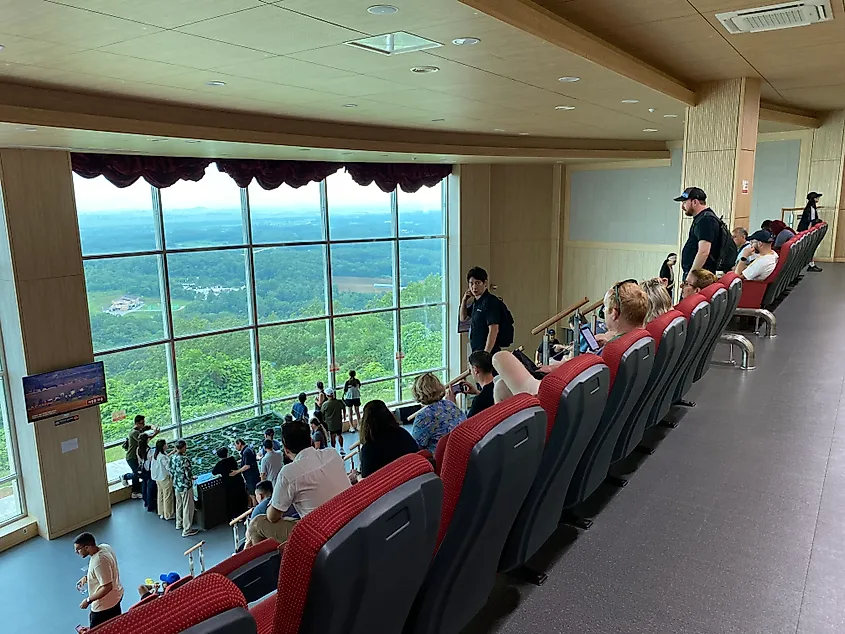
In July 2023, U.S. soldier Travis King made headlines after he darted across the North Korean border while on a civilian tour of the DMZ. Since then, the Joint Security Area (JSA), with its iconic blue buildings where enemy soldiers stoically stare each other down and representatives of both nations conduct negotiations, has been closed to the public. Likewise, because the North has taken to sending garbage balloons over the border (to which the South has responded by blasting K-Pop back at them through loudspeakers), the open-air rooftop viewing platform (where the binoculars are mounted) also remains closed as of the writing of this article. As such, North Korean territory and infrastructure can only be seen with the naked eye if the weather is clear. Furthermore, it is forbidden to take pictures of any facilities. Thankfully, my tour guide was happy to provide me with her photos, which were taken at a time when this was still allowed.
Third Tunnel Of Aggression
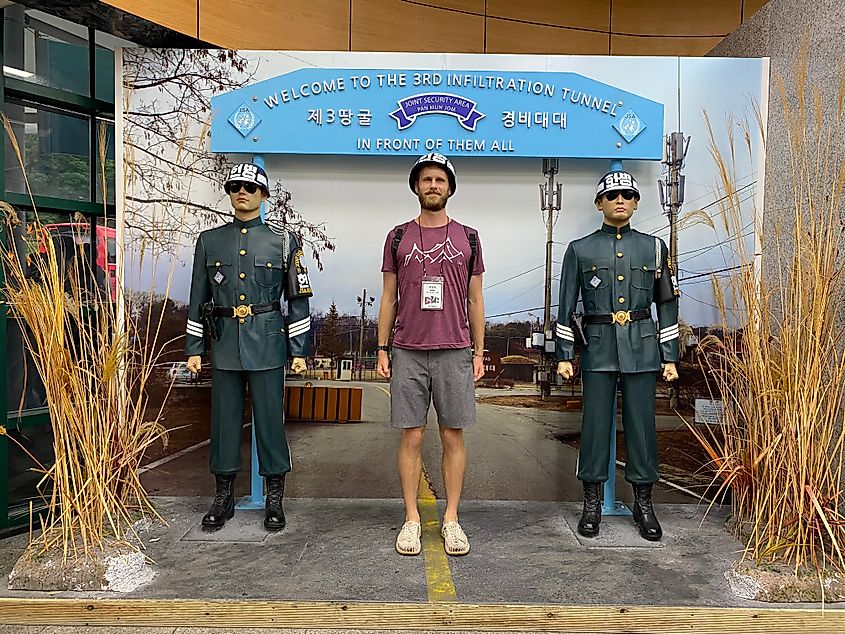
Over the decades, North Korea has made several (known) attempts to tunnel under the DMZ. Notified by a defector, South Korean authorities hatched a plan to line the region with PVC pipes full of water. When one of the pipes burst, South Korea knew where the tunnel was being dug, and North Korea knew that the jig was up. DMZ tours visit the "Third Tunnel of Aggression," which is open to the physically fit and non-claustrophobic public. Once again, I was not allowed to take photos of the actual site, so I included some cheeky tourist ones instead from the fair-game area up top.
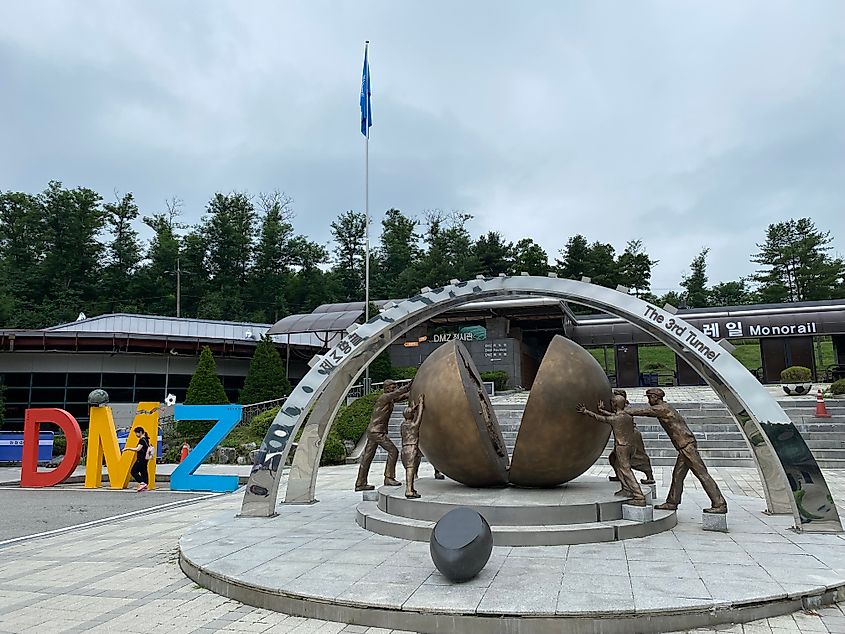
A steep and lengthy descent (which, conversely, becomes a steep and lengthy ascent on the way back) leads to a narrow, low-ceilinged tunnel (hard hats are required, and yes, I hit my head several times). After a 265-meter, quad-zapping, hunched waddle, the South Korean portion of the tunnel terminates at the first of three blast doors that were installed to seal off the burrowing North. It's a bit anticlimactic, if I'm being honest, but this part of the tour does highlight the sinister motivations of the North, and puts you in the shoes of those DPRK soldiers. Whatever could they be thinking?
Imjingak Park
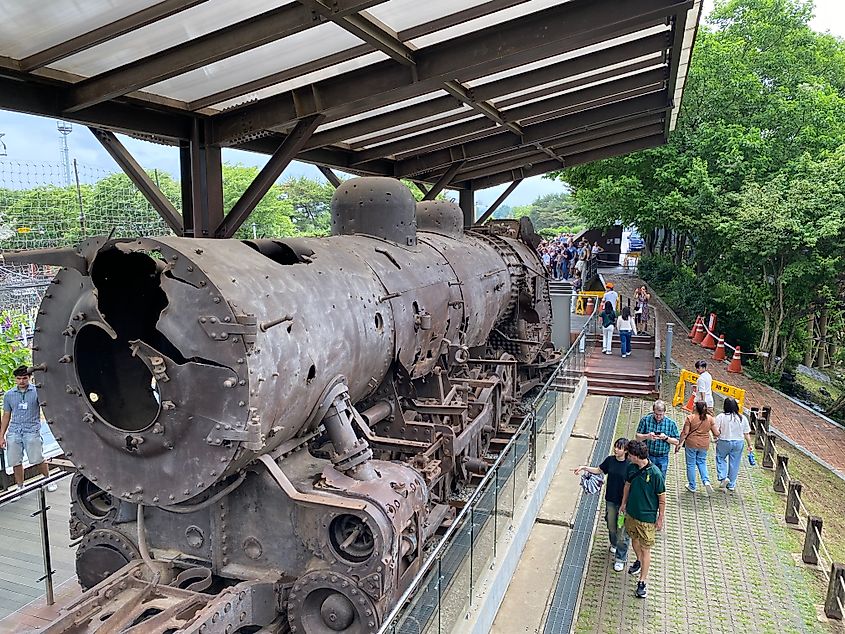
The last leg of standard DMZ tours (though not necessarily in this order) is a visit to Imjingak Pyeonghwa Nuri Park. This riverside attraction approaches visitors from three emotional angles. On the one hand, it stands as a monument to the unlikely goal of reunification. The site also offers a quiet reflection on Korea’s difficult past. The broken railway bridge and weather-worn steam engine hint at the Korean War (1950-), while memorials to the “Comfort Women” recall the Japanese colonial era (1910-45) and the Korean women who were coerced into wartime military brothels. Nearby plaques provide thoughtful historical context. And finally, in dramatic contrast, joyous screams resonate from the amusement park across the parking lot, and cheat-day foods are all around.
So Long, Seoul
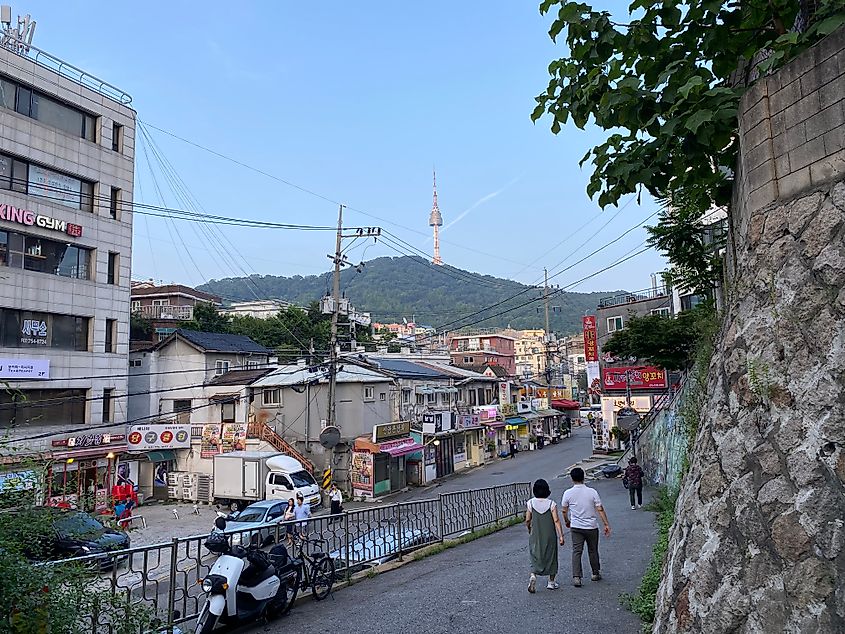
These are just a handful of attractions to get you started on your exploration of Seoul. But amidst the flashy neighborhoods and official tours, be sure to go off script once in a while, so as to stumble upon the nooks and crannies of this never-ending city. Try the dumplings from that random exposed-front restaurant, nurture your inner indie photographer in the aesthetically pleasing alleyways, take a breath at a Buddhist temple, or see what kinds of communal events are happening in the heart of town (Yeouido Park should have something up its sleeve). Whatever awaits beyond those hotel walls, I promise: a few days in Seoul is good for the soul.

